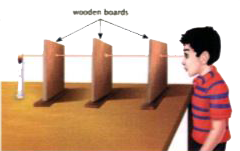In fungi homothallic term is used represent
Dioecious comdition
Unisexual condition
Bisexual condition
More than one option is correct
The correct Answer is:C
Step-by-Step Solution:
1. Understanding the Term "Homothallic":
- The term "homothallic" in fungi refers to a reproductive condition where an organism has both male and female reproductive structures. This means that a single organism can produce both types of gametes.
2. Identifying Related Terms:
- The homothallic condition is synonymous with "monoecious," which means that both reproductive organs are present in the same individual. This is in contrast to "dioecious," where individuals are either male or female.
3. Analyzing the Options:
- Option 1: "Dioecious condition" - This refers to organisms having only one type of sex organ (either male or female). This is incorrect for homothallic fungi.
- Option 2: "Unisexual condition" - Similar to dioecious, this indicates the presence of only one sex organ. This is also incorrect.
- Option 3: "Bisexual condition" - This aligns with the definition of homothallic, as it indicates the presence of both sex organs in the same organism. This is correct.
- Option 4: "More than one option is correct" - Since only one option (the third one) is correct, this is incorrect.
4. Conclusion:
- The correct answer is Option 3: Bisexual condition, as it accurately describes the homothallic nature of certain fungi.
- The term "homothallic" in fungi refers to a reproductive condition where an organism has both male and female reproductive structures. This means that a single organism can produce both types of gametes.
- The homothallic condition is synonymous with "monoecious," which means that both reproductive organs are present in the same individual. This is in contrast to "dioecious," where individuals are either male or female.
- Option 1: "Dioecious condition" - This refers to organisms having only one type of sex organ (either male or female). This is incorrect for homothallic fungi.
- Option 2: "Unisexual condition" - Similar to dioecious, this indicates the presence of only one sex organ. This is also incorrect.
- Option 3: "Bisexual condition" - This aligns with the definition of homothallic, as it indicates the presence of both sex organs in the same organism. This is correct.
- Option 4: "More than one option is correct" - Since only one option (the third one) is correct, this is incorrect.
- The correct answer is Option 3: Bisexual condition, as it accurately describes the homothallic nature of certain fungi.
Topper's Solved these Questions
- REPRODUCTION IN ORGANISMS BOOK - AAKASH INSTITUTE ENGLISHCHAPTER - REPRODUCTION IN ORGANISMS EXERCISE - ASSIGNMENT SECTION-B OBJECTIVE TYPE QUESTIONS
35 Videos
- REPRODUCTION IN ORGANISMS BOOK - AAKASH INSTITUTE ENGLISHCHAPTER - REPRODUCTION IN ORGANISMS EXERCISE - ASSIGNMENT SECTION-C PREVIOUS YEARS QUESTION
25 Videos
- REPRODUCTION IN ORGANISMS BOOK - AAKASH INSTITUTE ENGLISHCHAPTER - REPRODUCTION IN ORGANISMS EXERCISE - EXERCISE
20 Videos
- PRINCIPLES OF INHERITANCE AND VARIATIONBOOK - AAKASH INSTITUTE ENGLISHCHAPTER - PRINCIPLES OF INHERITANCE AND VARIATIONEXERCISE - Assignment (SECTION-D) Assertion-Reason Type Questions
20 Videos
- REPRODUCTIVE HEALTH BOOK - AAKASH INSTITUTE ENGLISHCHAPTER - REPRODUCTIVE HEALTH EXERCISE - Sectoin -D Assertion - Reason Type Questions
22 Videos
Similar Questions
Consider the following statements and mark them as true/false
I. Homothallic or monoecious represents the bisexual condition, e.g.coconut.
II. Heterothallic or dioecious represents the unisexual condition, e.g. date plam.
III. Earthworm and leech are hermaphrodites.
IV. Chara and Marchantia are monoecious plants.
Choose the correct codes.
View SolutionThe term keel is used for
View Solution
Knowledge Check
The term 'taxon' is used for
Athe ranks of species and genusBthe ranks up to phylumCthe species epithet onlyDany rank of taxonomic hierachy.
Clove used as spice represents
View Solution
What can be used to represent the light?
View SolutionTechnically homothallic mycelium is described as
View SolutionThe terms frond is used for
View SolutionThe terms frond is used for
View SolutionThe term prothallus is used for
View SolutionThe term 'fluid' is used for
View Solution
